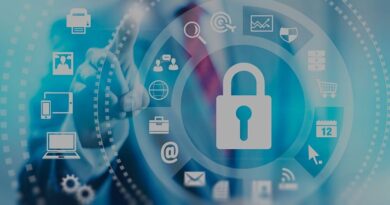Ransomware Preparedness for Healthcare: Enhancing Resilience Amid Growing Threats
By Dilip Nath, AVP & Deputy CIO, SUNY Downstate Health Sciences University
Ransomware attacks have become a significant problem in the healthcare sector. These criminal operations have become a formidable foe that needs a concerted response from healthcare groups. The recent high-profile cyber-attacks on prominent healthcare institutions have highlighted the critical need to tighten cyber security in the healthcare business. Proactive efforts are required since ransomware attacks not only endanger patient data, but also considerably raise the risk to medical care.
Preparing for Ransomware Attacks
In view of the increasing threat of ransomware attacks, healthcare companies must take a proactive approach to preparation. Thorough risk assessments are a critical component of this planning. These evaluations provide the core of ransomware mitigation strategies. At this stage, organizations in the healthcare industry carefully identify system flaws and analyze the dangers associated. Organizations can build a plan for delivering successful mitigation measures by appropriately identifying potential vulnerabilities in their cyber security architecture.
Developing a robust response strategy is also critical to their ransomware preparedness. Healthcare institutions that use this strategy will be directed like a compass through the turbulent waters of a ransomware attack. In the event of an attack, it provides precise, logical procedures that must be taken. This action plan includes procedures for isolating contaminated systems, an efficient reporting method for law enforcement, and an effective patient and staff communication approach. It is impossible to overstate the importance of having a well-organized reaction strategy since it ensures a coordinated and effective response when time is of the essence.
Furthermore, the value of the human aspect in cyber security cannot be emphasized. Employee training initiatives are a key priority for healthcare firms to equip their first line of defense. These courses provide healthcare personnel with the knowledge and skills to recognize specific ransomware threats. Employees are trained on how to identify phishing emails, which are regularly used as entry points for ransomware attacks, and how to report any suspicious behavior immediately.
Last but not least, proactive security deployment is critical for mitigating ransomware attacks. For this, reliable technologies like firewalls, antivirus software, and intrusion detection systems must be used. These layers of defense increase detection and mitigation, making it more difficult for hackers to infiltrate the system.
Responding to Ransomware Attacks
In the unfortunate event of a ransomware attack, a rapid and well-planned response is critical to reducing damage and regaining control.
Isolating Infected Systems
The first line of defense is to isolate vulnerable systems as quickly as possible. This precaution is required to prevent ransomware from spreading throughout the network. By isolating the susceptible systems, healthcare institutions can limit the attack’s reach and prevent further data compromise. Isolation is the first step in regaining control of the situation.
Collaborating with Law Enforcement
Cooperation with law enforcement is critical when responding to ransomware attacks. Their knowledge and resources aid in investigating, mitigating, and monitoring of cyber criminals, which helps the overall reaction and pursuit of justice while also avoiding new attacks.
Effective Communication with Stakeholders
Managing the aftermath of a ransomware attack necessitates open communication and fast information sharing. Personnel and patients must be informed about the incident’s impact on data security and medical services as soon as possible. Maintaining confidence, managing expectations, and ensuring a coordinated response contribute to a lower overall effect.
Data Restoration from Backups
Reliable data backup and recovery are critical for mitigating the effects of ransomware. They enable data restoration in order to sustain care and minimize long-term impacts. Updated backups serve as a safety net, allowing for recovery without falling into hackers’ demands and, eventually, resuming normal corporate operations.
Balancing Innovation and Security
While technologies such as generative AI and data modernization have immense potential, it is critical that cyber security is not jeopardized in the process. Given the rapid speed of technological advancement, the healthcare business cannot afford to remain complacent regarding security. Finding this balance is critical because it allows healthcare organizations to adopt developing technology while also ensuring the availability, confidentiality, and integrity of critical data and services.
In this day and age, healthcare must emphasize effective cyber security. This necessitates the deployment of cutting-edge technology, thorough risk analysis, and stringent standards. Leveraging innovation without accepting unnecessary risks is made feasible by improving cyber security while embracing technology. This harmony preserves patient information, maintains trust, and ensures the continuance of healthcare services.
Healthcare facilities are becoming vulnerable to ransomware attacks, a major problem that must be addressed immediately.
Strategies for Ransomware Preparedness
A comprehensive strategy for ransomware preparation includes several critical tactics:
- Rigorous Risk Assessment: Identifying vulnerabilities and threats via rigorous assessments is the cornerstone of resilience.
- Effective Response Planning: Prepares for every ransomware event. Regular response strategies should be developed and maintained.
- Employee Education: Ongoing training programs enable employees to proactively spot and resolve hazards.
- Robust Security Infrastructure: Investing in cutting-edge security practices and technology builds strong protection against cyber threats.
- Patient-Centric Approach: Maintaining patient trust and resolving patient concerns about data security are crucial in the healthcare sector.
- Continuous Improvement: Continuous improvement is made feasible by frequently reviewing protection, detection, reaction, and recovery capacities.
Healthcare facilities are becoming vulnerable to ransomware attacks, a major problem that must be addressed immediately. Proactive actions must be taken to build defenses against these dangers in order to protect patient care and the general public’s health. By conducting thorough risk assessments, developing specific response plans, educating employees, implementing advanced security measures, addressing patient concerns, and embracing technology while fortifying cyber security, healthcare organizations can successfully prepare for and respond to ransomware threats. These strategies are critical to ensuring that the healthcare business remains a reliable guardian of patients’ well-being in the face of evolving cyber threats.



